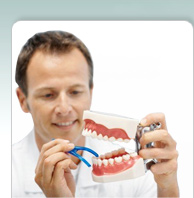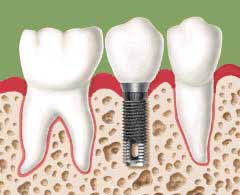 |
 |
|
|
|
| |
| |
 |
An implant is a small titanium cylinder (Fig. 1) that is surgically inserted into the bone of the jaw to replace the root of a missing tooth. |
|
| |
| |
Implants can be used to replace a single tooth, several teeth (Fig. 2) or to form a supporting structure (Fig. 3) for a denture. The number of implants required for each case can vary. Implants are very strong and solid. With implant-supported dentures, people can talk, laugh with confidence and enjoy eating foods that a denture-wearer would otherwise avoid thereby improving the quality of life. |
| |
| |
|
|
| |
|
| |
| |
| Back |
|
|
|
| Site Map |
|
Site Designed & Maintained by Epigram Digital |
|



